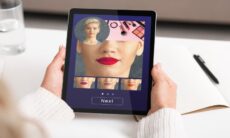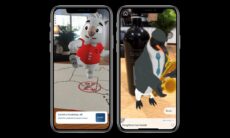IDC Forecasts Robust Rebound for AR/VR Headsets
The International Data Corporation (IDC) has identified a considerable upswing in shipments of augmented and virtual reality headsets after a period of stagnation. Its latest Worldwide Quarterly Augmented and Virtual Reality Headset Tracker shows that renewed consumer interest in both immersive headsets and smart glasses has driven an 18.1% increase in unit volumes over the same quarter last year.
Meta has emerged as the dominant vendor in this recovery, commanding just over half of the global market share with 50.8% of all headsets shipped. Behind Meta, XREAL has secured second place, owing chiefly to strong sales of its smart glasses products. Other notable performers include Viture, which achieved a remarkable 268.4% uplift in shipments, and TCL, which posted a 91.6% increase.
IDC analysts observe that the original pure-play virtual reality sector, once the flagship segment led by the likes of Meta, HTC, and Sony, is expected to contract in the coming years. Likewise, the earlier promise shown by standalone augmented reality devices, exemplified by Microsoft’s efforts, appears poised to occupy a modest niche within the broader market.
Alongside these shifts, the absence of Apple from the top rankings this quarter suggests a market pivot towards optical-see-through formats. Vendors specialising in mixed reality hardware and innovative form factors have thus gained traction, signalling a diversification of consumer preferences beyond fully immersive headsets.
Looking ahead, IDC forecasts a temporary 12% dip in overall AR/VR/MR shipments in 2025, attributing the downturn to several postponed product launches. However, this decline is projected to be short-lived: shipments are expected to surge by approximately 87% in 2026. Over the five-year span from 2025 to 2029, the market is anticipated to expand at a compound annual growth rate of 38.6%.
Mixed reality (MR) devices are poised to benefit from the strategic pivot of established virtual reality companies and the entry of new players such as Apple. Extended reality (ER) hardware, which integrates VR elements with real-world views, is also predicted to gain popularity among gaming enthusiasts. Furthermore, the rollout of Google’s Android XR platform is set to catalyse innovation across both MR and ER categories, much as Android has done within the smartphone industry.
Developments at major technology events have underscored these trends. At Google I/O, the firm unveiled enhancements to its Gemini AI framework and emphasised the Android XR initiative, which partners with industry leaders such as Samsung and Qualcomm to deliver mixed-reality and augmented-reality devices. Among the prototypes highlighted was the Moohan headset, described as the first commercial product built on Android XR.
Concurrently, Apple’s Worldwide Developers Conference showcased VisionOS 26, the updated operating system for the Vision Pro mixed reality headset. This release introduces advanced spatial computing functions and artificial intelligence integration, alongside new business-oriented features. For example, the system will support spatial collaboration tools such as Logitech’s Muse interface and Dassault Systèmes’ 3DLive application, enabling users to review three-dimensional designs both locally and with remote colleagues.
Despite a gradual pace of mainstream uptake, the XR sector continues to mature, with each innovation laying the groundwork for more transformative applications. Industry observers anticipate that forthcoming gatherings, such as Meta Connect, will provide platforms for vendors to articulate their long-term visions for augmented, virtual, and mixed reality and to showcase the next generation of immersive experiences.










